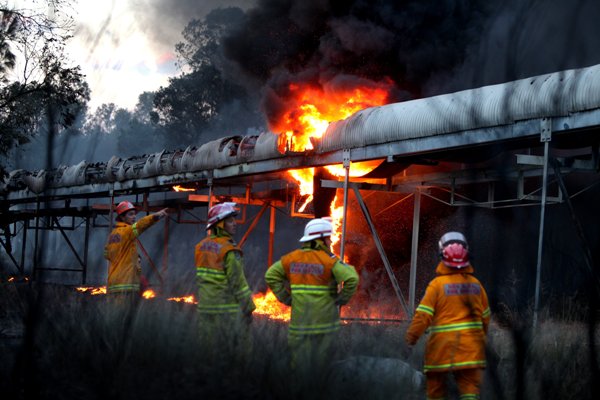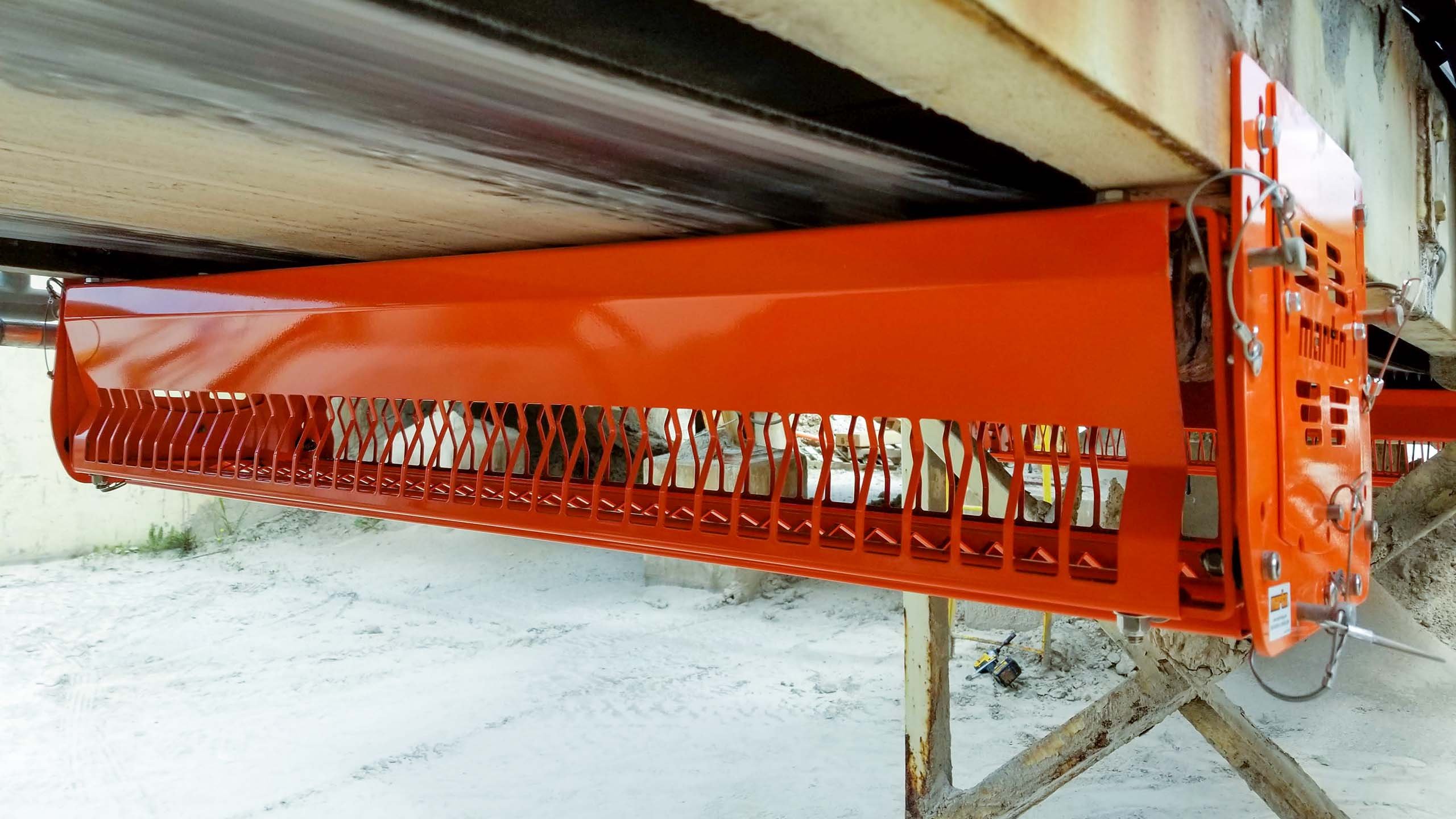A conveyor belt fire is a significant risk. The belting itself can burn; however, it is the length and movement of the belt that poses risks that a belt can spread a fire over a great distance within a facility in a very short time.

Fires on conveyor belting are most commonly ignited by the heat generated from friction induced by a pulley turning against a stalled (or slipping) belt or by the belt moving over a seized idler. Other conveyor fires have occurred when hot or burning material is inadvertently loaded onto the belt. Best practices for minimizing the fire risk of any conveyor belt include:
- Conducting regular belt examinations
- Removing all accumulations of combustible materials along the conveyor belt
- Correcting potential sources of fire such as seized rollers, overheated bearings, or belt misalignment
With this risk of fire, compounded by the toxic gases, thick smoke, and noxious fumes that can result from a conveyor fire, belting is regulated in those applications where these conditions are most dangerous underground mining and, particularly, underground coal mining. Many countries replaced the earlier requirement for flame-retardant belting, belting that passes a smaller Bunsen Burner Test, by mandating the use of self-extinguishing belting in underground applications.
It should be noted that ALL conveyor belts will burn given sufficient heat and airflow. However, standardized laboratory tests have been accepted by governmental regulatory bodies to measure and categorize the burning characteristics of different conveyor belts. In very general terms, "self-extinguishing" is considered to be a belt that will not propagate a fire in a laboratory setting once the ignition source has been removed.
Self-extinguishing belting is higher in cost than flame-retardant belting. This cost premium is generally 10 to 50 percent, but it will vary depending on the carcass construction and cover gauges.
With the exception of the United States, fire-safety standards for conveyor belting are similar in the largest coal mining countries, including Australia, Canada, China, Germany, India, Indonesia, Poland, Russia and South Africa. In Germany, for instance, strict requirements were implemented more than 30 years ago.
There are numerous international regulatory and advisory organizations and governmental agencies that provide guidance and direction. Those agencies include, but are not limited to: British Standards Institution (BSI), Conveyor Manufacturers Equipment Association (CEMA), Deutsches Institu für Normung (DIN), European Standards (EN), and the International Organization for Standardization (ISO).
The tests in these and most other countries include:
- Drum Friction Test (DIN 22100 et. al)
The drum friction test measures whether the surface temperature remains under a required maximum after a specific time and under a specific tension. The test procedure simulates a belt slipping over a jammed pulley or a pulley rotating under a stationary conveyor belt. To pass this test, the surface temperature of the belting must remain below 325 degrees Celsius (617° F) with no flame or glow visible.
- Surface Resistance Test (ISO 284/EN20284/DIN 20284)
An electrostatic charge may build up on the conveyor belt surface and ignite a mixture of flammable gases and air. By keeping the surface resistance of the belting low (making the belt cover more conductive), the conveyor belt allows the charge to flow freely, eliminating the risk of sparks.
- High-Energy Propane Burner Test (EN12881)
To determine whether a conveyor belt will propagate fire, a belt sample 2.0 to 2.5 meters long by 1200 millimeters wide (80 to 100 in. by 48 in.) is ignited by a propane burner. After the ignition source has been removed, the flames must self-extinguish within a certain amount of time, leaving a defined area of belt undamaged.
- Laboratory Scale Gallery Test (DIN22100 and 22118)
A specimen of belting 1200 millimeters long by 120 millimeters wide (48 in. by 4.8 in.) is placed over a propane burner. After the ignition source is removed, the flames must self-extinguish, and a defined undamaged length must remain. In the United States, conveyor belt flammability standards can be considered less stringent than those used in other countries, because a total system approach is taken to fire suppression. The US regulations include not only conveyor belting but air monitoring and motorslip detection devices.
See also: Conveyor Belt Fire Resistance Part 2





















Leave Comment